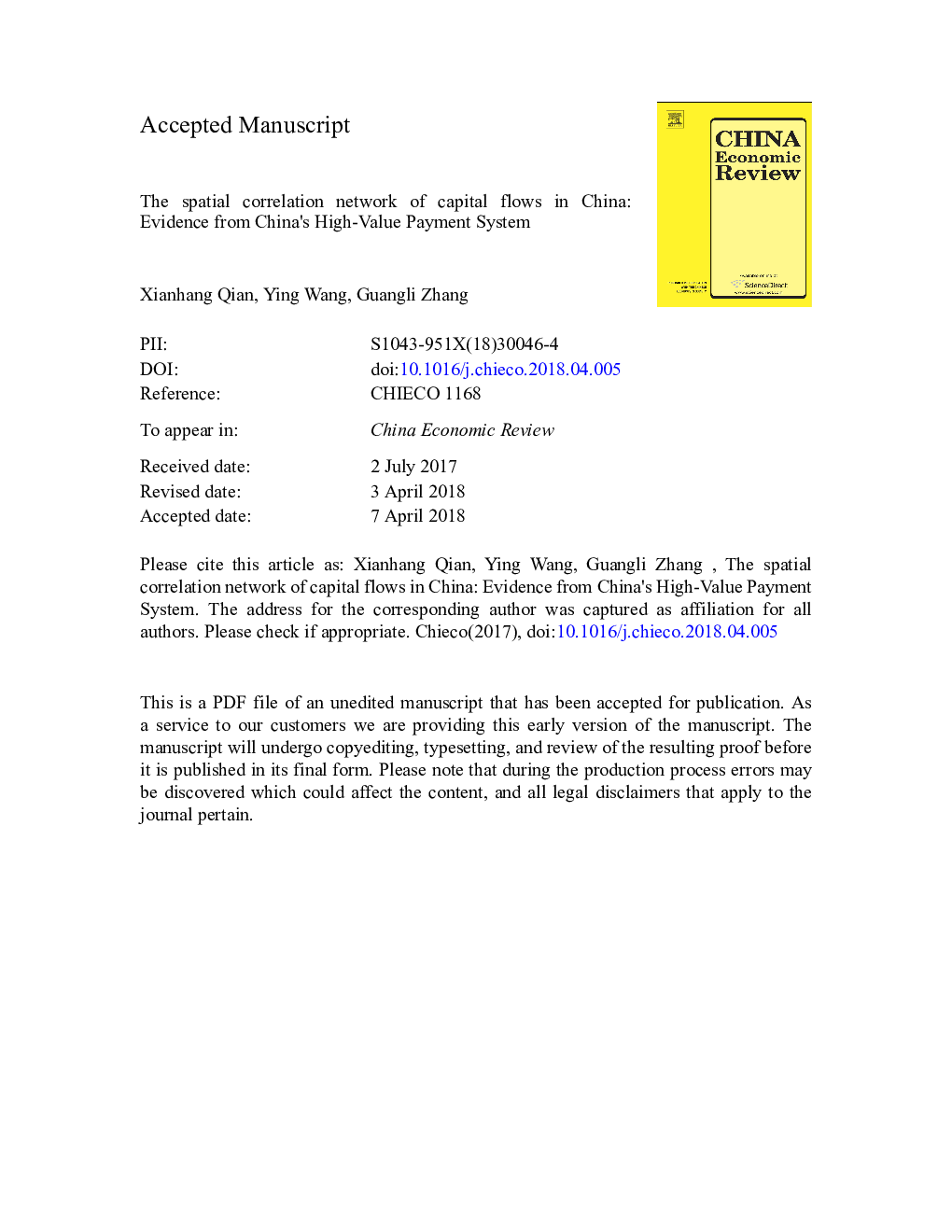| Article ID | Journal | Published Year | Pages | File Type |
|---|---|---|---|---|
| 7342284 | China Economic Review | 2018 | 38 Pages |
Abstract
Using data from China's High-Value Payment System, this paper directly and precisely measures interregional capital flows in China and analyzes their spatial correlation. Using social network analysis methods, this study finds a spatial correlation network between interregional capital flows. The closeness of the network is strong and has a high stability. Different provinces exhibit different positions in the network. Beijing, Jiangsu, Shandong, Shanghai, and Zhejiang are at the relative core, while Qinghai, Xinjiang, Guangxi, Anhui, and Tibet are at the periphery. According to a block model, the eastern provinces belong to a bidirectional spillover block, the middle provinces are in a primary beneficial block, and the western provinces are in a net beneficial block. Based on a quadratic assignment procedure regression analysis, the paper concludes that geographical distance and differences in provinces' fixed asset investments, foreign direct investments, and marketization levels are important factors that impact the spatial correlation of capital flows. The conclusions of this paper are significant for the formulation of a regional coordinated strategy in China.
Related Topics
Social Sciences and Humanities
Economics, Econometrics and Finance
Economics and Econometrics
Authors
Xianhang Qian, Ying Wang, Guangli Zhang,
